Content
- 1 Who is the tomato good with?
- 2 Each vegetable has its own "apartment"
- 3 Useful video
- 4 What can be planted with tomatoes in the open field
- 5 What to plant next to tomatoes in a greenhouse
- 6 Greenhouse neighbors must be selected based on the required growing conditions
- 7 Tomato friends in the greenhouse
- 8 Best Candidates for a Precursor or Descendant of Tomatoes in a Greenhouse
- 9 Compatibility of tomatoes with the most popular vegetables
Who is the tomato good with?
 A vegetable is like a person. In good company and he feels good. But how to determine what is suitable for a tomato in a closed limited area. What can be planted and grown in a greenhouse with tomatoes?
A vegetable is like a person. In good company and he feels good. But how to determine what is suitable for a tomato in a closed limited area. What can be planted and grown in a greenhouse with tomatoes?
He - pretty moody culture and not easy to clean. In the greenhouse, he will always be the owner... Therefore, cultures for the neighborhood with him should be selected similar in terms of growing conditions.
Cucumbers
Consider two of the most popular greenhouse crops - tomatoes and cucumbers. They don't belong in one greenhouse, only as a last resort and under certain conditions. The difference is in the conditions they need:
| Culture | Watering | Airing | Fertilizer | Temperature |
| Tomato | watering only at the root | Yes | necessarily | moderate |
| Cucumbers | watering and sprinkling | No | not required, except organic | thermophilic |
If possible, it is better to take cucumbers outdoors on a manured bed under a film, they will perfectly take root there and give a crop. Tomatoes are best left in the greenhouse..
Peppers
Another greenhouse crop, especially in Siberia and the northern regions, is sweet pepper. They are with tomato belong to the same species - nightshade. Greenhouse compatible, since the conditions of their cultivation are similar.
But there is one in their living together the problem is the microclimate in the greenhouse... Tomatoes love warm but dry air, which means that the temperature for them should be high, but at the same time with good air movement. And pepper, on the contrary, loves warmth and moisture to match the cucumbers.
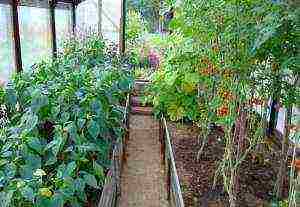 Some gardeners still grow peppers in the same garden with tomatoes.
Some gardeners still grow peppers in the same garden with tomatoes.
At the same time, a "chess" scheme is practiced, which provides sufficient access to light for both cultures.
Peppers benefit from the presence of tomatoes in the neighborhood... The substances contained in them scare away aphids, which are very fond of peppers.
Cabbage and salads
They get along well with early varieties of white cabbage, Peking cabbage, which in general used for compacting tomatoesplanting it at their feet. Wonderful tomato will get along with leafy salads.
Radish, onion and garlic
This neighborhood will benefit all cultures.... Onions with tomatoes are planted only those that are grown for greens. With such a neighborhood it is necessary to provide sufficient amount of light radishes, onions and garlic.
Garlic - a tomato's helper in the fight against late blight... Its curly arrows need to be collected and made from them an infusion for spraying tomatoes for preventive purposes.
Strawberry
Strawberries (strawberries) coexist well with tomatoes in the same room (greenhouse). Both crops do not like high humidity, they requires constant ventilation in order to avoid infection with fungal diseases. Besides, the draft contributes to the pollination of both crops.
 Strawberry bushes alternate with planting tomatoes according to the scheme 60 x 45 cm... Wherein strawberry feeding area should be at least 30 x 15 cm on the bush.
Strawberry bushes alternate with planting tomatoes according to the scheme 60 x 45 cm... Wherein strawberry feeding area should be at least 30 x 15 cm on the bush.
The best crops to grow together with tomatoes
From what is best to plant in a greenhouse along with tomatoes (tomatoes), you can make a small list:
- legumes (beans, beans);
- watermelons;
- radish;
- Melissa;
- celery;
- parsley;
- basil.
Melissa and Basil Improve Tomato Flavor... The main thing is to observe the light regime for the neighbors. For this, tomato bushes must be tied up.
Incompatible cultures
- Dill;
- kohlrabi;
- fennel.
Vegetables correctly selected for joint cultivation will not only not harm each other, but also will help to increase yields up to 20-25%.
Each vegetable has its own "apartment"
For those who are still trying to grow poorly compatible vegetables in the same greenhouse, there is a way out. This is organization of space... What can you plant tomatoes with in a greenhouse? The most "greenhouse" plants are tomatoes, cucumbers, peppers and eggplants. Their compatibility is poor, so they should be separate from each other.
If the greenhouse has two entrances from opposite sides, it is easier to place cultures in it. With sufficient width, three beds are made. Tomatoes are planted on the middle - this part of the greenhouse is best ventilated. Peppers are placed on the north side, cucumbers or eggplants on the south side. Although it is better to exclude cucumbers.
If there is only one door in the greenhouse, and on the opposite side there is only a window, crops can be arranged in the following order: tomatoes are planted near the doors, they must be separated from the rest of the area either with a film, or with slate or plywood. The best material is film.
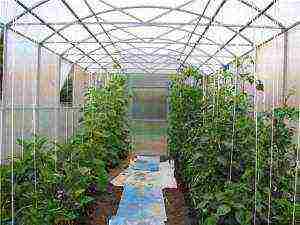 Next, cucumbers are planted, followed by eggplants - both vegetables are very thermophilic and in the middle they will be fine. And last but not least, peppers are planted by the window, they prefer a cooler atmosphere.
Next, cucumbers are planted, followed by eggplants - both vegetables are very thermophilic and in the middle they will be fine. And last but not least, peppers are planted by the window, they prefer a cooler atmosphere.
Placing not very compatible crops in the same greenhouse you need to be prepared for a slight decrease in yield each of the cultures.
Today, greenhouse manufacturers offer various designs, in particular, indoor ones. With the help of partitions-modules, you can create separate rooms with the desired microclimate in them, which will allow you to combine the "incompatible" in one greenhouse and not think about what to plant tomatoes with.
Useful video
For more information on what you can plant tomatoes in a greenhouse with and how to equip a greenhouse in order to make the most of the space, and grow incompatible vegetables in it, you can watch the video:
Hello! What can you plant in a greenhouse with tomatoes? This year I finally got a greenhouse, I am going to plant several varieties of tomatoes. But I want to add other vegetables to them. I heard that cucumbers and tomatoes get along badly. Or maybe you should take a chance and plant a few bushes? Or opt for other vegetables? Reviews on this topic are contradictory, I would like to hear the opinion of experts.
Good afternoon! When deciding what else can be planted in the greenhouse along with tomatoes, it is worth considering the size of the shelter, the presence of additional doors and vents. If the room is spacious enough, it is quite possible to plant cucumbers next to the tomatoes by placing them at the farthest end of the greenhouse, away from drafts. Cucumbers need warmth and high humidity; tomatoes love a cooler microclimate and fresh air. By dividing these crops, it is possible to organize ventilation from the side of the tomatoes, while the cucumbers will remain warm. Another way out is to install a light plywood partition or separate the cucumber area with plastic wrap.
An important point is plant nutrition. Tomatoes are sensitive to feeding, they need an increased amount of potassium and phosphorus. Excess nitrogen can cause a massive discharge of ovaries and significantly reduce yields. It is not recommended to often feed tomatoes with organic matter, this contributes to the accumulation of nitrates. When choosing neighbors in the greenhouse, you need to focus on plants with similar requirements.
Sweet peppers or eggplants can be placed next to the tomatoes. Cabbage (white cabbage, cauliflower, broccoli or kohlrabi), corn, sunflowers, beans, sweet peas, various types of spicy herbs, physalis get along well with tomatoes. Melons will become good neighbors: watermelons or melons. It is useful to plant parsley (regular or curly), anise, celery or mint next to tomatoes - these plants repel insect pests. For the same purpose, marigolds can be planted along the edge of the beds. To save space, it is worth using the aisles.
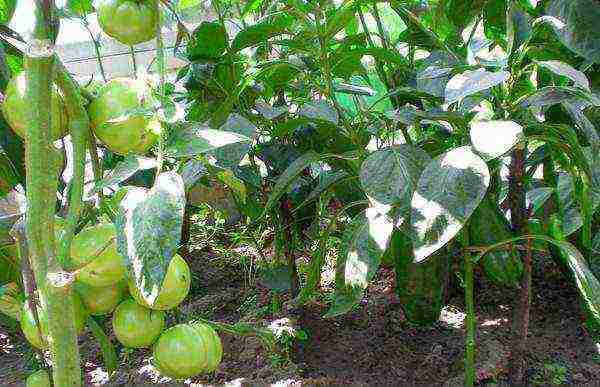
A very good idea is to plant early ripe crops next to tomatoes: onions and garlic on a feather, Chinese cabbage, radishes. An early crop will be harvested before the tomatoes start to ovulate, vegetables will not compete for nutrients. In a tomato greenhouse, you can grow any seedlings: vegetable, flower. It is sown in the ground or planted in boxes placed on the floor and shelves.
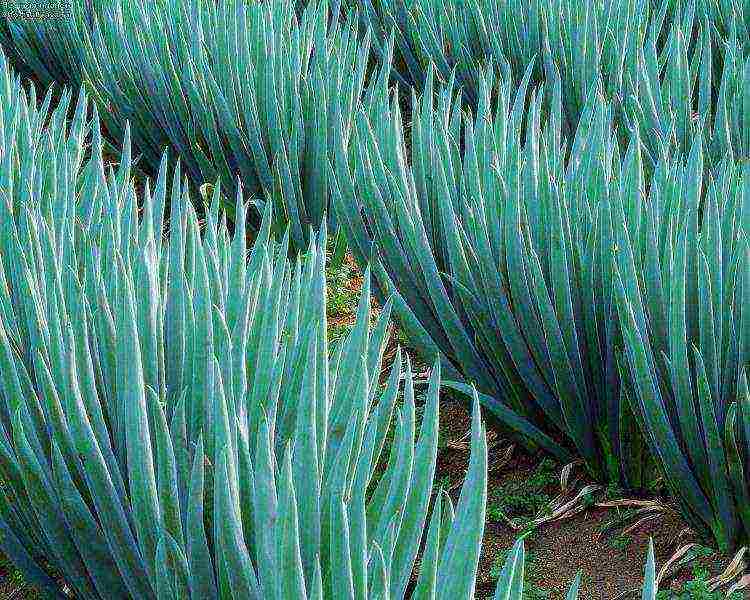
When choosing neighbors for tomatoes, their interests should also be taken into account. For example, cabbage planted next to tomatoes is less likely to be affected by the typical cruciferous flea. Onions on a feather or turnip will protect tomatoes from late blight. Experimenting with varieties and planting times can lead to very interesting results.
Rate the article:
(2 votes, average: 1 out of 5)
What to plant next to tomatoes is not an idle question. The volume and quality of the future harvest sometimes directly depends on neighbors in the garden. If you choose the right options for garden crops for joint plantings, the plants will grow healthier and stronger - it's checked!
Even if your goal is not to save space on the site (in the greenhouse) and your own efforts to process the beds, you should think carefully about the selection of neighboring crops. Firstly, so that they do not exchange the same diseases and pests, and secondly, so that they do not oppress each other. At best, well-chosen companions will even help neighboring plants, creating a kind of symbiosis on the garden bed.
What can be planted with tomatoes in the open field
So, what to plant next to tomatoes in the same garden? For example, legumes (beans or beans), which will enrich the soil and improve its structure. In general, this applies to the neighborhood of tomatoes with almost any green manure - mustard (and she will also help from late blight and scab), phacelia, cereals.
Tomatoes go well with green ones - all types salads, parsley, celery, onions, spinach, asparagus, sorrel... But with umbrella (dill, fennel) and lemon balm, it is better to avoid the neighborhood of tomatoes.
And it's also nice to surround the tomatoes with spicy herbs: plant thyme, sage, mint, basil, thyme... By the way, the usual stinging nettle and cucumber herb (borago) scare away soil pests, extend the shelf life of fruits and even improve the quality of tomato juice! In general, almost any herbs and green crops help tomatoes to suffer less from harmful insects.
Can I plant cabbage next to tomatoes? Yes, provided that it is heady and early (for example, varieties Nakhodka, Express, Chudo ultra early). Cabbage seedlings are planted in the garden in spring, with a distance between rows of at least 1.5 m. And when it finally gets warmer, you can place tomato seedlings between plantings, which will feel great.
By the way, with such a neighborhood you will delight not only tomatoes, but also the cabbage itself - neighbors with nightshades do not like cabbage butterflies, which means that your harvest will remain intact.
Such landings can also be "diluted"onions and garlic, which will not only perfectly fit into the company of cabbage and tomatoes, but will also emit phytoncides, protecting all neighbors from phytophthora.
Suitable for the neighborhood with tomatoes and "impostor", she cabbage, which is actually one of the subspecies of turnips. Beijing will feel great as a planting sealant "in the legs" of tomatoes.
But peas, cauliflower, broccoli and kohlrabi are not the best neighbors for tomatoes.
Plant marigolds in a garden with tomatoes (or even around the perimeter of the entire garden), they perfectly repel insect pests.
Root crops - carrots, radishes and beets - also get along well with tomatoes, even in the same garden.
Melons are also good "partners" for tomatoes - melons and watermelons, if, of course, your site allows you to grow such light and heat-loving curiosities. For our latitudes, tomatoes are more likely to be adjacent to another representative of this group - with pumpkinwith whom they also have an excellent relationship.
An interesting idea would be the combined planting of tomatoes and early strawberries - and save space, and get two crops from one garden (both berries and vegetables). Just make sure that the selected tomato variety is not too tall and does not take away all the sunlight from the strawberries.
You need to understand that tomatoes can not only benefit from neighboring plants, but they themselves can be excellent partners. For example, when planting tomatoes next to berry bushes (currants, gooseberries) they will drive away the moth and the sawfly from the latter.
And if you plant tomatoes near bird cherry, then it will scare away the scoop from nightshades.
Today there are many varieties and varieties of all the above crops. Consider their characteristics (ripening time, plant growth and size) so that they "like the tomato" as the main crop.
The most unfortunate neighbors for tomatoes are potatoes and corn. At a minimum, they are all very demanding on nutrients in the soil, which means they will simply be strong food competitors. Secondly, they either have in the "history" the same diseases (late blight), or suffer from the invasion of the same pests (Colorado potato beetle, cotton scoop, wireworm), which they can "exchange".
What to plant next to tomatoes in a greenhouse
To grow tomatoes in a closed room with its own microclimate, and even with neighbors, you need to clearly remember the requirements of the main culture. Tomatoes prefer good lighting (however, cloudy weather is not critical for them), moderate air temperature, frequent airing, regular fertilizing and watering at the root. When choosing neighbors in the greenhouse, you need to focus on plants with similar requirements. When deciding what else can be planted in the greenhouse along with tomatoes, you also need to take into account the size of the room, the material of the roof and walls, the presence of additional doors and vents.
So, with what you can plant tomatoes in a greenhouse. According to the above example with the open field option, in the greenhouse, for a start, in the same way, before planting tomatoes, you can sow early and fast-growing crops thickly - onion and garlic on the pen, salads, radishes, collard greens... When the time comes for tomato seedlings - just make room for them among these crops and you will be able to harvest the "pioneers" for at least a month while the tomatoes are just developing.
What else? Almost all the same crops that we described above, if you prefer growing them in a greenhouse - melons, legumes, greens, cabbage, strawberries, herbs... The main thing is not to forget to tie up tall and voluminous tomato bushes so that they do not obscure their smaller brothers in the greenhouse from the sun.
Let's take a look at some of the most frequently asked questions about possible neighbors of tomatoes in a greenhouse.
Is it possible to plant tomatoes and cucumbers nearby
Cucumbers and tomatoes in the greenhouse, in principle, do not interfere with each other. The main problem may be their different requirements for the microclimate. Judge for yourself.
Tomatoes:
- prefer moderate temperatures and dry air,
- require regular ventilation of the greenhouse,
- very demanding on fertilization,
- love watering at the root.
Cucumbers:
- prefer high temperature and high humidity,
- do not tolerate drafts,
- may well do without other abundant dressings, provided that organic matter is introduced in a timely manner,
- love plentiful watering and sprinkling.
Therefore, if possible, it is better to settle these crops in different greenhouses or to take out the cucumbers in open ground under a film.
Is it possible to plant peppers next to tomatoes
Tomatoes and peppers have quite similar requirements for humidity and temperature conditions in the greenhouse. In addition, peppers, like tomatoes, need a garter. So a common trellis is quite suitable for them - pull the wire at a height of about 2 m.
Tomatoes will also help scare off aphids, which love peppers.
However, peppers with tomatoes belong to the same family (Solanaceae), which means the presence of the same diseases and pests that will perfectly wander from one culture to another. If you are able to provide good protection from insects and infections to both, feel free to plant these plants together (checkerboard pattern is recommended). The presence of marigolds around the perimeter of the structure will also help.
Remember only that both cultures love light, so do not thicken the plantings, and also carry out the garter of the plants in time and competently.
Can eggplants be planted next to tomatoes
The main problem of joint cultivation of tomatoes and eggplants in a greenhouse is the same as in the previous case - common diseases and pests of the same family.
Their microclimate requirements are not particularly similar:
- eggplant needs much more light for full development,
- eggplant is a more thermophilic culture than tomato,
- eggplant likes much more humid air than tomatoes,
- eggplant needs more moisture when watering.
Therefore, if possible, avoid simultaneously growing these crops in the greenhouse.
If this is not possible (this also applies to the case of cucumbers and peppers), and you are determined to grow both plants this season, try to optimize their place of residence, somehow delimit the greenhouse territory into areas with different microclimates. This can be done using self-made (plywood, plastic film, non-woven fabric) or industrially (special modules) partitions. It is also good to divide crops into separate beds - heat-loving crops are planted away from the entrance and drafts, and tomatoes are placed closer to the greenhouse doors.
In any case, having not very compatible crops in the same greenhouse, be prepared for a slight decrease in the yield of each of them.
Well, and, of course, if you are expecting a bountiful harvest, growing tomatoes in a greenhouse, you should remember not only about their neighbors, but also about the rules for caring for them and competent agricultural technology.
In any case, each plot or greenhouse has its own size, soil, microclimate ... Even if you follow the above recommendations, keep in mind that they are quite general. Only your personal experience and observation of your own plants will help you choose the right growing method.
Information about what can be planted with tomatoes will be incomplete without knowing what should not be planted with them in any case. Find the best way to combine plants in your garden and enjoy a great harvest!
Agronomists are in favor of the allocation of individual greenhouses for each crop, but due to the lack of space on the site, it is usually necessary to arrange a "hostel" in the greenhouse for different types of vegetables. At the same time, it turns out that some plants are able to have a negative effect on each other when their beds are close in the greenhouse. For example, in our area, tomatoes and cucumbers are most often planted in the same greenhouse, but it is these crops that are "antagonists" that can mutually reduce the yield.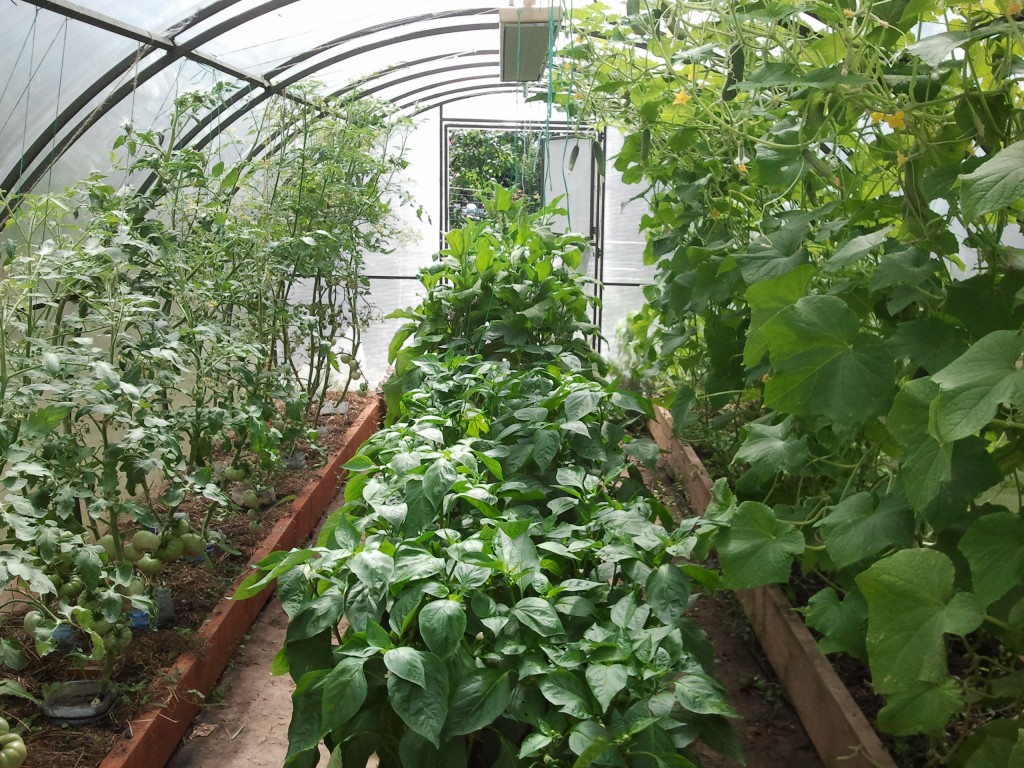
Greenhouse neighbors must be selected based on the required growing conditions
The greenhouse allows you to get a harvest of any crop at a time that can be characterized in relation to this vegetable by the definition of "off season". Therefore, home-grown greenhouse owners try to "fit" in them the largest number of different types of vegetables. Peppers, radishes, onions or cucumbers are traditionally "addicted" to tomatoes, but not all of these vegetables have crop compatibility.
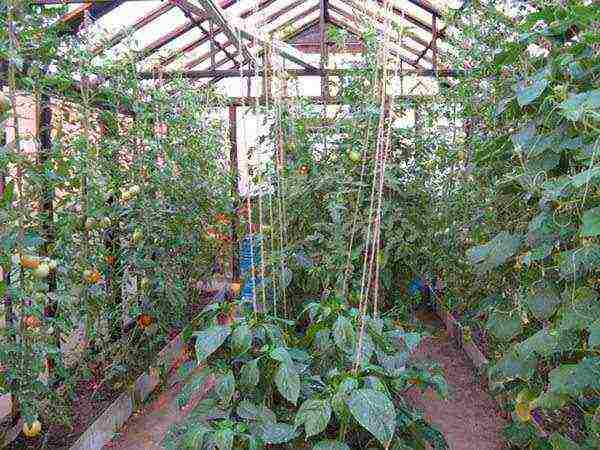 Each vegetable crop during cultivation has its "own" requirements regarding:
Each vegetable crop during cultivation has its "own" requirements regarding:
- air temperature;
- soil moisture level;
- the degree of ventilation of the greenhouse;
- the type and amount of feed needed.
If you place vegetables with diametrically different growing parameters next to it, then one or another culture will be suppressed. Tomatoes show a very great "capriciousness" in terms of compatibility with other "inhabitants" of the greenhouse, because they are the dominant crop in the garden. You can also read an article about the temperature regime for tomato seedlings.
Tomato friends in the greenhouse
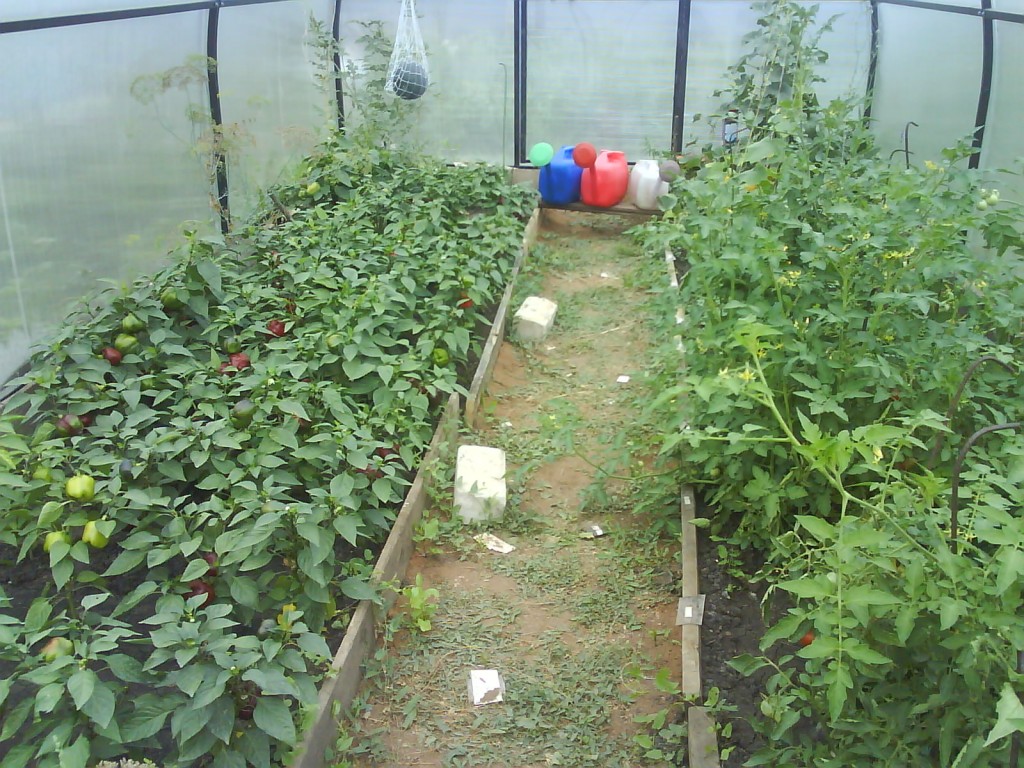 When choosing what to plant in the greenhouse with tomatoes, it is recommended to pay attention to cabbage, eggplants, onions, strawberries, legumes, radishes, lettuce, melons, watermelons, peppers and sunflowers. Tomato's neighbors can be early cabbage (white cabbage or Peking cabbage), radishes or onions on a feather. These crops will ripen before the moment when the tomatoes begin to actively consume nutrients from the soil due to the ovary, so they will not have a conflict. In addition, planting onions next to it prevents late blight in tomatoes.
When choosing what to plant in the greenhouse with tomatoes, it is recommended to pay attention to cabbage, eggplants, onions, strawberries, legumes, radishes, lettuce, melons, watermelons, peppers and sunflowers. Tomato's neighbors can be early cabbage (white cabbage or Peking cabbage), radishes or onions on a feather. These crops will ripen before the moment when the tomatoes begin to actively consume nutrients from the soil due to the ovary, so they will not have a conflict. In addition, planting onions next to it prevents late blight in tomatoes.
To protect tomatoes from late blight, planting garlic next to them is used, and to protect against insects - placing beds with marigolds, anise, parsley, mint. To enhance the taste of tomato fruits, basil or lemon balm should be planted in the greenhouse.
Best Candidates for a Precursor or Descendant of Tomatoes in a Greenhouse
Above it was talked about next to which crops the tomato will grow comfortably in the greenhouse. Now we will talk about after which culture it is better to plant tomatoes, and what can be planted in the greenhouse after tomatoes.
Vegetables of related crops can transmit various diseases to each other through the soil. The relatives of the tomato are potatoes, watermelons, melons and cucumbers. Therefore, it is better not to plant tomatoes where the aforementioned nightshades or melons were previously located.
It is better to alternate planting tomatoes, in which the main task of growth is growing tops, with crops that spend their strength on growing roots - these are turnips, onions, celery, radishes, beets, carrots.
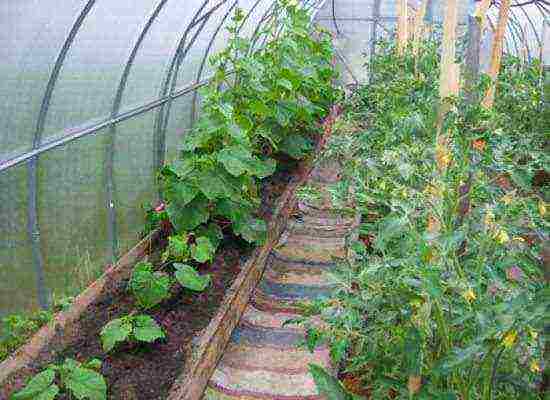 So, the crops after which it is recommended to plant tomatoes are cabbage, onions, pumpkin, squash, zucchini, beets, carrots and turnips. Tomatoes should not be planted on the soil where tomatoes, potatoes, peppers, eggplants, peas and dill have already grown before. The latter is dangerous in that it sprouts next season at the site of last year's sowing and interferes with the growth of the tomato.
So, the crops after which it is recommended to plant tomatoes are cabbage, onions, pumpkin, squash, zucchini, beets, carrots and turnips. Tomatoes should not be planted on the soil where tomatoes, potatoes, peppers, eggplants, peas and dill have already grown before. The latter is dangerous in that it sprouts next season at the site of last year's sowing and interferes with the growth of the tomato.
Tomatoes, during their growth, oxidize the soil, and new tomato seedlings need neutral soil acidity. If you plan to plant a tomato after a tomato in the same soil, you will have to neutralize the acidity of the earth with fluff lime or planting green manure plants.
Recommendations for what to plant after tomato are similar to the list of crops recommended as precursors to tomatoes. These are cabbage, pumpkin seeds, legumes, beets, lettuce, garlic, onions, parsley and (in this case, you can) dill.
Compatibility of tomatoes with the most popular vegetables
Most often, gardeners try to place tomatoes in the same greenhouse with the crops most demanded in our diet: cucumbers, peppers or eggplants. But the compatibility of these bundles does not always exist. So, cucumbers and tomatoes in a greenhouse together can be grown only by delimiting their growth zones.
Tomatoes and cucumbers
 Tomatoes require sub-root watering, good ventilation, mandatory fertilization and a fairly moderate temperature regime. Cucumbers also need to be watered by sprinkling. They do not like drafts, do not need vitamin supplements, except for organic fertilizers, they need heat. These different care requirements show that growing cucumbers and tomatoes in the same greenhouse requires different approaches.
Tomatoes require sub-root watering, good ventilation, mandatory fertilization and a fairly moderate temperature regime. Cucumbers also need to be watered by sprinkling. They do not like drafts, do not need vitamin supplements, except for organic fertilizers, they need heat. These different care requirements show that growing cucumbers and tomatoes in the same greenhouse requires different approaches.
So that these antagonists do not mutually interfere, you need to divide the room into two parts before planting cucumbers and tomatoes in the greenhouse. If there is only one entrance to the greenhouse, then it is possible to organize the delimitation of zones with a film curtain. Such zoning is also used: on one edge of the greenhouse, beds with tomatoes are placed, on the other - with cucumbers, and the middle of the greenhouse is occupied with peppers or eggplants.
Tomatoes and peppers
Being related by the species of nightshade, tomatoes and peppers get along very well in the same greenhouse. Moreover, the presence of nearby tomato bushes protects the pepper from damage by aphids.
Tomatoes and eggplants
But it is necessary to grow tomatoes and eggplants in the same greenhouse, taking into account the differences that are inherent in these two crops in the content.
Tomatoes need less light and water than eggplants. Therefore, their cultivation, as well as the joint cultivation of cucumbers and tomatoes in a greenhouse, requires the delimitation of space and the creation of climatic conditions necessary for each culture in these zones. See the article: Fertilizers for tomato and pepper seedlings.


